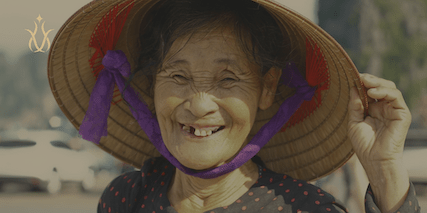Discover the secrets of longevity across different cultures worldwide. Explore lifestyles, diets, and habits that contribute to extended lifespans around the globe.
Introduction
Step into any serene village in Okinawa or walk through the sun-kissed streets of a Sardinian town, and you might notice something remarkable: a significant proportion of the local populace seems to wear the graceful mantle of age but with a vitality that belies their years. What’s the secret behind these pockets of longevity scattered across our globe?
First and foremost, what do we mean when we refer to an “aging population”? It’s not just a matter of spotting a few more grey heads in a community. An aging population is defined by a notable surge in the proportion of individuals aged 65 and above relative to the younger segments of that population. This shift, more often than not, emerges from a cocktail of factors such as declining birth rates, successful healthcare systems (which lead to lower infant mortality rates), and, most poignantly, a significant leap in average life expectancy.
Indeed, the heartbeat of our discussion centres around this incredible global phenomenon of soaring life expectancies. Data from reputable institutions like the World Health Organisation (WHO) echo the same sentiment: as a species, we’re enjoying the longest lifespans in human history. It’s no longer an exception to hear of individuals blowing out a hundred candles on their birthday cakes; it’s becoming the norm in many regions.
But why this upswing in longevity? Could it be the advancements in modern medicine, the focus on preventive healthcare, or perhaps the genetic lottery that some populations seem to have won? As we journey through this topic, we’ll unearth the secrets of the world’s oldest populations, from the pristine coasts of Japan to the olive groves of Greece.
Factors Influencing Longevity in Populations
When we think about longevity, often the first images that come to mind are of tight-knit families in Mediterranean villages, sharing laughter and healthy meals, or perhaps of elderly individuals in Japan practising Tai Chi at dawn. While these picturesque scenarios capture elements of longevity, behind these images are intricate, multifaceted systems that play a pivotal role in the lifespan of populations. Let’s delve into some of the compelling factors that contribute to this enduring zest for life.
Role of Advanced Healthcare in Prolonging Life
Without a doubt, the healthcare infrastructure of a region is its backbone, serving as the hero in our longevity narrative.
Modern medical innovations have drastically transformed the landscape of global health. Procedures that were once deemed high-risk or even impossible are now performed routinely. Take, for instance, the advancements in cardiac surgeries or the precision of robotic-assisted procedures. These breakthroughs have not only increased the success rates of treatments but have also played a cardinal role in reducing post-operative complications, essentially offering individuals a new lease of life.
Additionally, the availability and accessibility of such sophisticated healthcare in certain countries have created environments where individuals, even in their advanced years, can seek and receive treatments that significantly improve their quality of life. For example, cataract surgeries, which can dramatically enhance vision in the elderly, or hip replacements, enabling them to remain mobile and independent, are now commonplace in many advanced healthcare systems. The ripple effect? Longer, healthier, and more active lives.
Preventive Healthcare Measures and Their Impact
However, the magic doesn’t just lie in treating ailments; it’s also in preventing them. The adage, “prevention is better than cure”, couldn’t ring truer in the context of longevity.
Preventive healthcare encompasses a wide spectrum, from regular health screenings to immunisation programmes. When populations undergo routine checks, conditions like hypertension, diabetes, or high cholesterol—often termed ‘silent killers’ due to their asymptomatic nature in the early stages—can be identified and managed effectively.
Moreover, education plays a crucial role here. Countries that invest in educating their citizens about the importance of regular health checks, a balanced diet, and physical activity often see a decline in lifestyle-related diseases. The introduction of vaccines for preventable diseases also substantially reduces mortality rates, particularly in the elderly, who may be more susceptible.
In essence, it’s not just about adding years to life, but life to years. By combining the strengths of advanced medical interventions with robust preventive measures, certain countries have unlocked the formula to not only longer lives but ones brimming with vitality.

Diet and Longevity
Unpacking the secrets of longevity brings us to the very heart of human existence: our diet. The age-old saying, “We are what we eat,” seems simplistic at first glance, yet as we delve deeper into the dietary habits of those residing in the countries with the oldest populations, the profound wisdom in this adage becomes unmistakably clear.
Influence of the Mediterranean Diet
Imagine a sun-drenched coastline where locals gather around rustic wooden tables laden with vibrant dishes—plump olives, freshly caught fish drizzled in golden olive oil, and luscious tomatoes bursting with flavour. This is not merely a picturesque vacation scene but an everyday reality for many in countries bordering the Mediterranean Sea.
The Mediterranean diet, practised in regions like Greece, Spain, and Italy, is more than just a culinary tradition—it’s a way of life. Rich in fruits, vegetables, whole grains, fish, nuts, and, of course, generous lashings of olive oil, this diet strikes a harmonious balance between delightful flavours and health benefits.
But what makes this diet a standout in the quest for longevity? Firstly, it’s brimming with antioxidants. Foods such as tomatoes, berries, and nuts combat oxidative stress, which has been linked to a myriad of age-related diseases. Olive oil, the crowning jewel of this diet, is replete with heart-healthy fats that combat inflammation and support cardiovascular health.
It’s also worth noting that this isn’t a diet centred on deprivation. Rather, it’s a celebration of fresh, local produce consumed in moderation and often shared in the company of loved ones. The very act of communal eating, enjoying meals as a festivity rather than a mere function, plays a pivotal role in holistic well-being.
The link between Traditional Practices and a Prolonged Lifespan
Beyond the Mediterranean shores, many cultures worldwide have cherished dietary customs that have gracefully transcended generations. From the antioxidant-rich green teas of Japan to the probiotic goodness of Korean kimchi, traditional foods often encapsulate a treasure trove of health benefits.
In Okinawa, for instance, the practice of hara hachi bu—eating until one is 80% full—is a testament to the region’s mindful eating habits, which undoubtedly contribute to its impressive longevity rates. Similarly, the reverence for fermented foods in many cultures not only aids digestion but also fortifies gut health, which emerging research suggests plays a monumental role in overall well-being.
While modern science continues to advance with innovative health solutions, there’s undeniable wisdom ingrained in age-old dietary practices. A return to these roots, combined with contemporary knowledge, could indeed be the elixir to a long, thriving life.

Physical and Mental Activity among the Elderly
At the heart of longevity lies a principle almost as old as time itself: a sound body and a sound mind. The world’s oldest populations aren’t just benefiting from their dietary choices; their commitment to physical and mental well-being plays an integral role in their exceptional life spans.
Exercise Habits Observed in Countries with Older Populations
When one thinks of exercise, images of gym workouts, marathon runs, and intensive sports may spring to mind. Yet, in countries boasting older populations, physical activity is often seamlessly integrated into daily life. Picture the terraced fields of rural Japan, where the elderly participate in manual farming, or the picturesque villages in Italy, where walking remains a principal mode of transportation.
In places like Okinawa and Sardinia, regular, moderate exercise isn’t a scheduled activity; it’s a way of life. Activities such as gardening, dancing at community festivals, or practising traditional forms of exercise like Tai Chi in China serve dual purposes: they foster community ties while also keeping the body agile.
Mental Health Trends and Their Connection to Longevity
Mental well-being is just as crucial, if not more so, than physical health in the longevity equation. In these countries with older populations, there’s a marked emphasis on maintaining strong social connections, participating in community events, and valuing intergenerational relationships. Such interactions don’t just fend off loneliness; they offer emotional support, a sense of belonging, and purpose.
Furthermore, the societal attitude towards aging in these regions is noticeably positive. Rather than viewing their elderly as a burden, they are revered, respected, and often sought after for guidance. This positive reinforcement promotes better mental health and, by extension, a longer, more fulfilling life.
The Role of Continuous Learning and Cognitive Stimulation
Lifelong learning is another common thread weaving through these elderly-rich communities. Be it mastering a traditional craft in the heart of Greece or playing strategic board games in South Korea, there’s a palpable zest for continuous cognitive engagement.
Research consistently emphasises the protective effects of mental stimulation against cognitive decline. Engaging in activities that challenge the brain—like reading, solving puzzles, or learning a new skill—has been linked with reduced risks of diseases like Alzheimer’s. In essence, the brain, much like muscles, follows the principle of “use it or lose it”.
The symbiotic relationship between the body and the mind emerges as a cornerstone of longevity. For those seeking to not just add years to their life but life to their years, the lessons from the world’s oldest populations are clear: stay active, both physically and mentally, nourish social connections, and never cease to learn.
Genetic Considerations
The mysteries of our DNA have always held a certain allure. When looking at the tapestry of human longevity, one can’t help but wonder: are some populations genetically predisposed to outlive others? The evidence suggests that genes play a pivotal role, but they’re just one piece of the intricate puzzle of aging.
The Prevalence of Longevity Genes in Specific Countries
It’s intriguing to note that certain regions, dubbed ‘Blue Zones’ like Okinawa in Japan and Sardinia in Italy, have an unusually high concentration of centenarians. While lifestyle factors undoubtedly play a part, researchers have been keen to explore the genetic angle.
Studies have pinpointed specific genes, like the FOXO3 gene, more prevalent in these long-lived populations. This particular gene is believed to play a protective role against aging, enhancing the body’s resistance to stress and even specific diseases. Another gene of interest is CETP, linked to an extended lifespan and better overall cognitive health in one’s twilight years.
Japan and South Korea, both boasting commendable longevity figures, have been at the forefront of genetic research in this domain. With their advanced biotechnological capabilities, researchers in these nations are striving to unravel the intricate connections between our genes and the aging process.
In Japan, for instance, the Japanese Centenarian Study focuses on understanding the genetic factors contributing to its elderly population’s remarkable health and longevity. Findings from such research deepen not only our understanding of the aging process but also open avenues for potential anti-aging therapies and interventions.
South Korea isn’t far behind, with substantial investments in genomic studies aimed at deciphering the secrets of their long-lived citizens. By analysing vast genetic datasets, scientists are identifying patterns and mutations that may hold the keys to prolonged health and vitality.
While genes do set the stage, they don’t write our destiny. They are influencers, not dictators, of our lifespan. However, understanding these genetic nuances can equip us with invaluable insights, guiding healthcare and lifestyle interventions to support longer, healthier lives. As we continue to demystify the genetic foundations of longevity, one thing becomes increasingly clear: our genes offer clues, but it’s our choices that determine the quality and length of our lives.

A Closer Look at Countries with Aging Populations
Japan
Stepping into Japan, you’re immediately embraced by a culture that marries ancient traditions with modern sensibilities. This profound respect for history extends not just to places and practices but also to people, especially the elderly.
In Japan, elders are considered treasures, repositories of wisdom and experience. This reverence manifests in various forms, from holidays celebrating the elderly to daily acts of kindness. Such recognition plays a pivotal role in the mental and emotional well-being of older citizens. When society values and acknowledges its seniors, it instils a sense of purpose, belonging, and self-worth, factors intimately tied to health and longevity.
Okinawa, an island chain south of mainland Japan, stands out not just for its tropical beauty but its extraordinary number of centenarians. As one of the world’s recognized ‘Blue Zones’, it has become a focal point of research into longevity. The Okinawans’ blend of regular physical activity, a plant-based diet rich in sweet potatoes, and tight-knit community connections have all been touted as life-extending factors.
Italy
The Mediterranean diet, a symphony of olive oil, fresh vegetables, lean proteins, and red wine, is often lauded for its health benefits. This dietary routine, deeply ingrained in Italian culture, is linked with reduced risks of chronic diseases and longer life expectancy. Its emphasis on whole foods and heart-healthy fats might just be Italy’s delicious secret to an extended lifespan.
However, an older demographic does pose challenges. Italy grapples with economic implications stemming from a larger retired population, necessitating reforms in pension systems and a push for younger workforce participation.
Greece, Portugal, and Spain
The trio, while distinct in culture, share common threads when it comes to their aging populations.
Just like their Italian neighbours, these countries revel in the glory of the Mediterranean diet. Their streets are fragrant with the aroma of olive oil and garlic, and their markets are a riot of colour with fresh produce. This shared dietary secret bolsters their populations’ heart health and overall longevity.
A deep-seated value in these nations is the importance of family. Multi-generational homes are commonplace, ensuring that the elderly receive care and emotional support from their kin, reinforcing their mental and physical well-being.
Northern European Perspectives: Finland, Germany, Sweden, and Norway
The Northern European narrative around aging interweaves government action, societal norms, and tech innovations.
These countries, often heralded for their robust welfare systems, have proactive policies supporting their elderly. From pension schemes to healthcare initiatives, the governments ensure their senior citizens are well cared for, contributing to their longer, healthier lives.
In a world becoming increasingly digital, these nations excel in integrating technology to aid their aging citizens. Be it through telehealth services in Sweden, assistive robots in Germany, or digital literacy programmes in Finland, technology bridges the gap, ensuring the elderly remain connected, autonomous, and engaged.
Economic and Social Impacts of Aging Populations
As our world witnesses the grey surge, the implications stretch far beyond just medical and health domains. It delves deeply into the very fabric of economies and societies, interlacing with policies, practices, and priorities.
When imagining a nation’s populace, we often envision a balanced tapestry of ages, from the jubilant youth to the seasoned elderly. However, a shift towards an older demographic can induce some intriguing economic dynamics.
Challenges Faced by Countries with Older Populations
Aging populations place substantial pressure on national resources. With a significant portion of citizens in the retirement phase, there’s a consequent surge in health and social care demands. As this demographic isn’t actively contributing to the workforce, nations often face reduced productivity and labour shortages, triggering a ripple effect on economic growth and vibrancy.
Economic Dependency Ratios and Their Implications
The economic dependency ratio, a metric highlighting the ratio of working-age citizens to those typically deemed ‘dependent’ (usually under 15 and over 64), becomes an area of concern. Higher ratios imply that a smaller chunk of the population is shouldering the economic burden. Countries with elevated dependency ratios grapple with potentially decreased economic output, leading to potential economic stagnation or even decline.
Government Policies and Interventions
Governments globally have adapted their pension and retirement systems to cater to their elderly populace. Take Austria, for instance, where the retirement age has been gradually inching up to ensure the sustainability of pension systems. Canada, on the other hand, has been focusing on enhancing its Canada Pension Plan, ensuring it remains robust and responsive to the needs of an aging population.
Alongside financial considerations, there’s a surge in the emphasis on quality of life. The archetype of senior living facilities has been undergoing a transformation in many developed nations. Gone are the sterile, hospital-like environments. In their stead, we see the dawn of vibrant community-driven spaces, offering an amalgamation of healthcare, recreation, and social engagement. These facilities aim to provide seniors not just with longer lives but richer, more fulfilling ones.
Challenges and Opportunities
Navigating the nuances of an aging global population is akin to sailing choppy waters; it’s fraught with challenges yet replete with opportunities for those who dare to innovate.
Healthcare and Economic Challenges
The onset of an elderly majority is both a testament to medical advancements and a precursor to unprecedented challenges.
In China, where the one-child policy previously limited population growth, the rapid emergence of an elderly demographic places an immense burden on healthcare infrastructures. Hospitals and clinics find themselves overwhelmed, not just by the numbers but by the complexity of geriatric health issues. On the other hand, Switzerland, despite its robust healthcare system, faces a scarcity of professionals specialising in elderly care, compelling a re-evaluation of medical training priorities.
With a surge in non-working elderly citizens, countries, including Estonia and Latvia, find themselves grappling with an altered economic landscape. These nations face potentially decreased economic dynamism, with fewer younger individuals entering the workforce, challenging sustainability in the long run.
Technology’s Role in Addressing Aging Populations
In every challenge, there lies an opportunity. As countries grapple with the complexities of an older populace, technology emerges as a beacon of hope.
South Korea has witnessed the dawn of bespoke tech solutions for its senior citizens. Innovations range from user-friendly smartphones to wearable devices monitoring health vitals, ensuring a safer, connected, and health-conscious elderly community.
As mobility becomes a focal point, countries globally are reimagining public transport. There’s a push for more accessible transport modes, with features such as lower steps, clearer audio-visual announcements, and priority seating, making journeys seamless for older individuals.
Conclusion
Winding through this exploration, we’ve embarked on a journey spanning continents, cultures, and challenges. The undeniable truth remains – our world is greying. Yet, this isn’t merely a testament to longevity; it’s an invitation to innovate, understand, and, most importantly, respect and cherish the wisdom of our elder populace. For in their stories, experiences, and very existence lies the heartbeat of our shared human heritage. As we march forward, it’s paramount to embrace, address, and celebrate the needs and invaluable contributions of our aging global community.
Disclaimer: This article is for informational purposes only and should not replace professional medical advice. If you have specific concerns or medical conditions, it is recommended to consult with a healthcare professional for personalised guidance and support.






